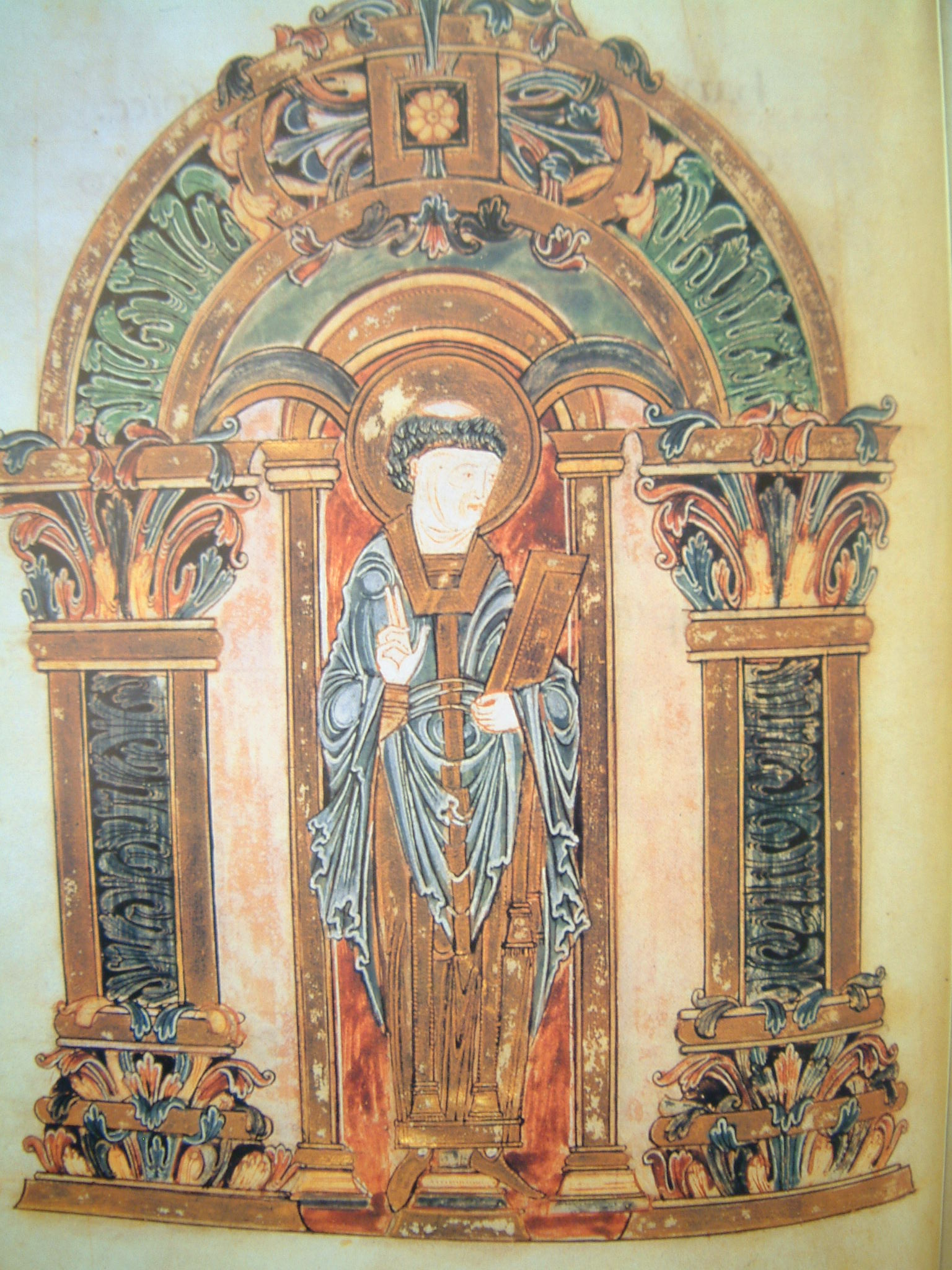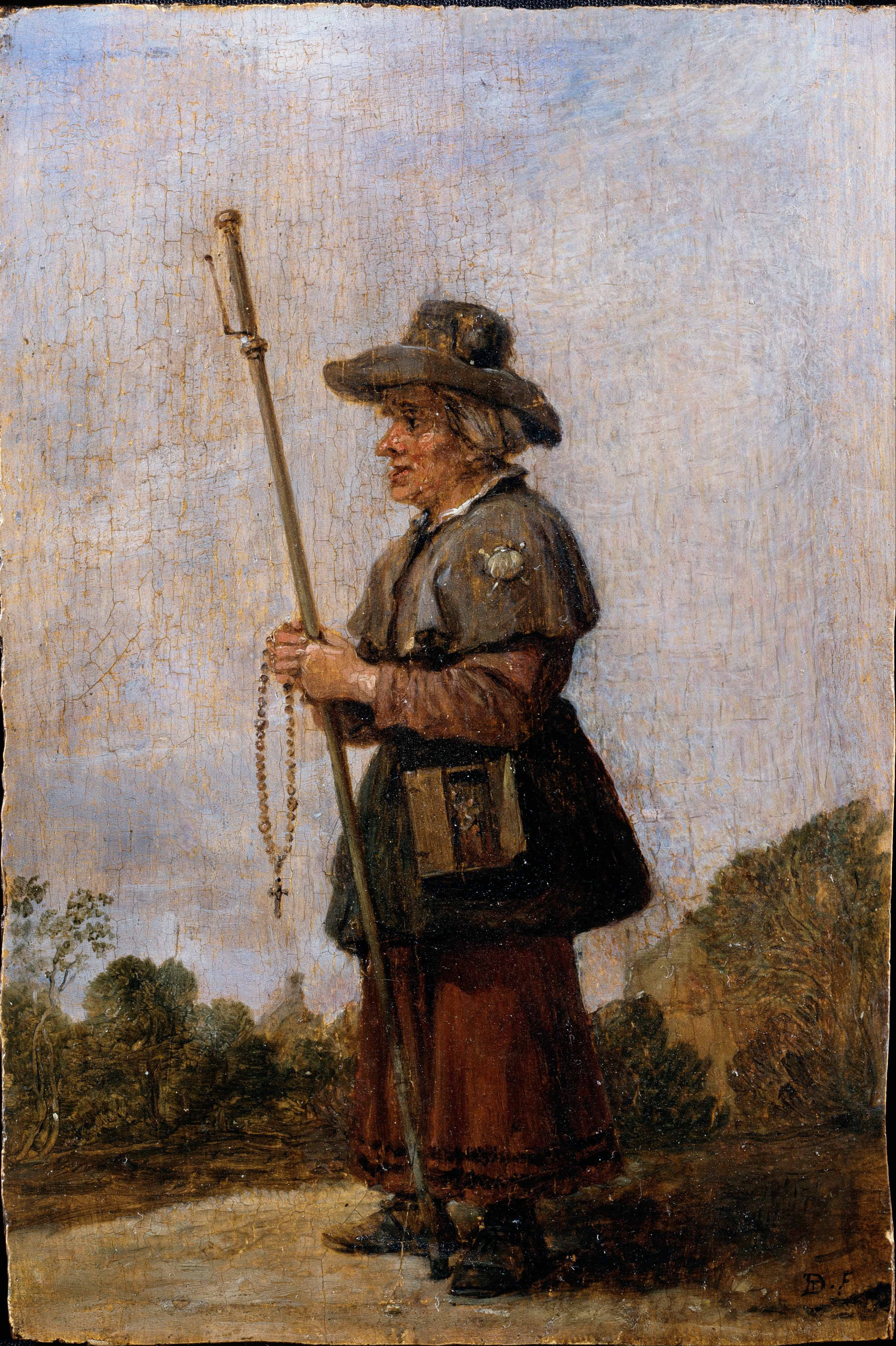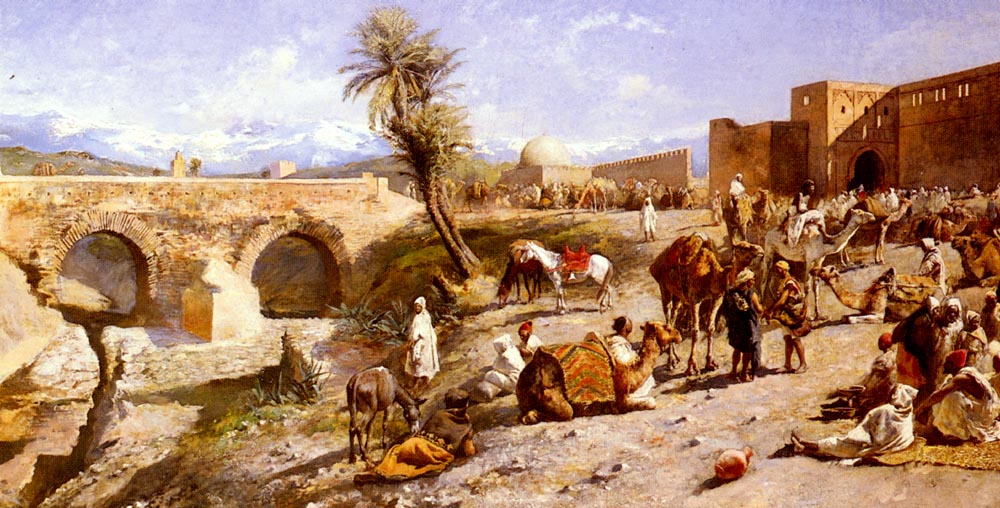|
Godelieve
Saint Godelieve (also known as Godeleva, Godeliève, and Godelina; nl, Sint-Godelieve) ( 10526 July 1070) is a Flemish saint. She behaved with charity & gentleness to all, accepting an arranged marriage as was the custom, but her husband and family turned out to be abusive. Eventually he had her strangled by his servants. Every year, on the Sunday following 5 July, a procession celebrating Saint Godelieve takes place in Gistel. Hagiography Tradition, as recorded in her ''Vita'', states that she was pious as a young girl, and became much sought after by suitors as a beautiful young woman. Godelieve, however, wanted to become a nun. A nobleman named Bertolf (Berthold) of Gistel, however, determined to marry her, successfully invoked the help of her father's overlord, Eustace II, Count of Boulogne, along with her parents. She accepted the betrothal obediently & went to Bertolf's family home. There she was badly treated by him & his mother, while she continued to live an obedient ... [...More Info...] [...Related Items...] OR: [Wikipedia] [Google] [Baidu] |
Ten Putte Abbey
Ten Putte Abbey (also known as the Saint Godelina Abbey) is a monastery with an abbey in Gistel, roughly 8 km (5 miles) to the south of Ostend, in the western part of Belgium. It was built to mark the spot where, in 1070, Saint Godelina was murdered by strangulation and then thrown into a pond. Before 2007 the abbey was home to nine Benedictine nuns, who were members of the wider Subiaco Cassinese Congregation in West Flanders. Since 2007 it has been occupied by brothers and sisters of the "Mother of Peace" community. Parts of the abbey are sometimes open to visitors including the pond, which has been enclosed as a well, the dungeon where Godelina is said to have been incarcerated, the chapel in which she is believed to have performed a miracle, the Abbey Church and a small recently renovated museum concerning the saint. History The abbey was founded at some point between 1137 and 1171. According to some sources''Vita Godeliph'' by Drogo, a monk at the former St. Winnoc ... [...More Info...] [...Related Items...] OR: [Wikipedia] [Google] [Baidu] |
Gistel
Gistel () is a city and municipality located in the Belgian province of West Flanders. Following local government boundary reforms in 1971 and 1977, the municipality has comprised not only Gistel, but also the towns of Moere, Snaaskerke and Zevekote. On January 1, 2006 the Gistel municipality had a total registered population of 11,125, of whom more than 8,000 were in Gistel itself. The total area is 42.25 km² which gives a population density of 263 inhabitants per km². The German town of Büdingen is its twin town. Celebrity connections The most famous inhabitant of Gistel was Sylvère Maes, winner of the Tour de France in 1936 and 1939. Another former resident of Gistel is Johan Museeuw, also famous cyclist, but now retired. He won Paris–Roubaix three times. In 2011, a museum opened in Gistel, in honor of Maes and Museeuw. A former mayor, Bart Halewyck, was the first hacker ever convicted in Belgium after the ' Bistel Trial' in 1990. He was already alde ... [...More Info...] [...Related Items...] OR: [Wikipedia] [Google] [Baidu] |
Swithun
Swithun (or Swithin; ang, Swīþhūn; la, Swithunus; died 863 AD) was an Anglo-Saxon bishop of Winchester and subsequently patron saint of Winchester Cathedral. His historical importance as bishop is overshadowed by his reputation for posthumous miracle-working. According to tradition, if it rains on Saint Swithun's bridge (Winchester) on his feast day (15 July) it will continue for forty days. Biography St. Swithun was Bishop of Winchester from his consecration on 30 October 852 until his death on 2 July 863. However, he is scarcely mentioned in any document of his own time. His death is entered in the Canterbury manuscript of the ''Anglo-Saxon Chronicle'' (MS F) under the year 861. He is recorded as a witness to nine charters, the earliest of which (S 308) is dated 854. More than a hundred years later, when Dunstan and Æthelwold of Winchester were inaugurating their church reform, Swithun was adopted as patron of the restored church at Winchester, formerly dedicated ... [...More Info...] [...Related Items...] OR: [Wikipedia] [Google] [Baidu] |
Saint
In religious belief, a saint is a person who is recognized as having an exceptional degree of holiness, likeness, or closeness to God. However, the use of the term ''saint'' depends on the context and denomination. In Catholic, Eastern Orthodox, Anglican, Oriental Orthodox, and Lutheran doctrine, all of their faithful deceased in Heaven are considered to be saints, but some are considered worthy of greater honor or emulation. Official ecclesiastical recognition, and consequently a public cult of veneration, is conferred on some denominational saints through the process of canonization in the Catholic Church or glorification in the Eastern Orthodox Church after their approval. While the English word ''saint'' originated in Christianity, historians of religion tend to use the appellation "in a more general way to refer to the state of special holiness that many religions attribute to certain people", referring to the Jewish tzadik, the Islamic walī, the Hindu rishi or ... [...More Info...] [...Related Items...] OR: [Wikipedia] [Google] [Baidu] |
Pilgrimage
A pilgrimage is a journey, often into an unknown or foreign place, where a person goes in search of new or expanded meaning about their self, others, nature, or a higher good, through the experience. It can lead to a personal transformation, after which the pilgrim returns to their daily life. Background Pilgrimages frequently involve a journey or search of moral or spiritual significance. Typically, it is a journey to a shrine or other location of importance to a person's beliefs and faith, although sometimes it can be a metaphorical journey into someone's own beliefs. Many religions attach spiritual importance to particular places: the place of birth or death of founders or saints, or to the place of their "calling" or spiritual awakening, or of their connection (visual or verbal) with the divine, to locations where miracles were performed or witnessed, or locations where a deity is said to live or be "housed", or any site that is seen to have special spiritual power ... [...More Info...] [...Related Items...] OR: [Wikipedia] [Google] [Baidu] |
Medardus
Saint Medardus or St Medard (French: ''Médard'' or ''Méard'') (ca. 456–545) was the Bishop of Noyon. He moved the seat of the diocese from Vermand to Noviomagus Veromanduorum (modern Noyon) in northern France. Medardus was one of the most honored bishops of his time, often depicted laughing, with his mouth wide open, and therefore he was invoked against toothache. Life St Medardus was born around 456 at Salency, Oise, in Picardy. His father, Nectaridus, was a noble of Frankish origin, while his mother Protagia was Gallo-Roman.Clugnet, Léon. "St. Medardus." The Catholic Encyclopedia Vol. 10. New York: Robert Appleton Company, 1911. 1 April 2019 The '' Roman Martyrology'' includes the f ... [...More Info...] [...Related Items...] OR: [Wikipedia] [Google] [Baidu] |
Feast Day
The calendar of saints is the traditional Christian method of organizing a liturgical year by associating each day with one or more saints and referring to the day as the feast day or feast of said saint. The word "feast" in this context does not mean "a large meal, typically a celebratory one", but instead "an annual religious celebration, a day dedicated to a particular saint". The system arose from the early Christian custom of commemorating each martyr annually on the date of their death, or birth into heaven, a date therefore referred to in Latin as the martyr's ''dies natalis'' ('day of birth'). In the Eastern Orthodox Church, a calendar of saints is called a '' Menologion''. "Menologion" may also mean a set of icons on which saints are depicted in the order of the dates of their feasts, often made in two panels. History As the number of recognized saints increased during Late Antiquity and the first half of the Middle Ages, eventually every day of the year h ... [...More Info...] [...Related Items...] OR: [Wikipedia] [Google] [Baidu] |
Procession
A procession is an organized body of people walking in a formal or ceremonial manner. History Processions have in all peoples and at all times been a natural form of public celebration, as forming an orderly and impressive ceremony. Religious and triumphal processions are abundantly illustrated by ancient monuments, e.g. the religious processions of Egypt, those illustrated by the rock-carvings of Boghaz-Keui, the many representations of processions in Greek art, culminating in the great Panathenaic procession of the Parthenon Frieze, and Roman triumphal reliefs, such as those of the arch of Titus. Greco-Roman practice Processions played a prominent part in the great festivals of Greece, where they were always religious in character. The games were either opened or accompanied by more or less elaborate processions and sacrifices, while processions from the earliest times formed part of the worship of the old nature gods, as those connected with the cult of Dionysus and the ... [...More Info...] [...Related Items...] OR: [Wikipedia] [Google] [Baidu] |
Robert I, Count Of Flanders
Robert I ( – 13 October 1093), known as ''Robert the Frisian'', was count of Flanders from 1071 to his death in 1093. He was a son of Baldwin V, Count of Flanders and the younger brother of Baldwin VI, Count of Flanders. He usurped the countship after defeating his nephew Arnulf III and his allies, which included King Philip I of France, count Eustace of Boulogne and the counts of Saint-Pol and Ardres at the Battle of Cassel. Charles Verlinden, "Robert Ier le Frisson", Ghent, 1935. He subsequently made peace with Philip, who became his stepson-in-law, but remained hostile to his sister Matilda and her husband William the Conqueror, who was king of England and duke of Normandy. Early life Robert was the younger son of Baldwin V of Flanders and Adela, a daughter of King Robert II of France.Detlev Schwennicke, '' Europäische Stammtafeln: Stammtafeln zur Geschichte der Europäischen Staaten'', Neue folge, Band II (Marburg, Germany: Verlag von J. A. Stargardt, 1984), Taf ... [...More Info...] [...Related Items...] OR: [Wikipedia] [Google] [Baidu] |
Gertrude Of Saxony
Gertrude of Saxony ( 1030 – August 4, 1113), also known as Gertrude Billung, was a countess of Holland by marriage to Floris I, Count of Holland, and countess of Flanders by marriage to Robert I, Count of Flanders. She was regent of Holland in 1061-1067 during the minority of her son Dirk V, and regent of Flanders during the absence of her spouse in 1086–1093. Biography She was the daughter of Bernard II, Duke of Saxony and Eilika of Schweinfurt. Countess of Holland In c. 1050, she married Floris I, Count of Holland (c. 1017 – June 28, 1061). Upon the death of her spouse in 1061, her son Dirk V became Count of Holland. Since he was a minor, she became regent. When Dirk V came into power, William I, Bishop of Utrecht, took advantage of the situation, occupying territory that he had claimed in Holland. Gertrude and her son withdrew to the islands of Frisia (Zeeland), leaving William to occupy the disputed lands. Countess of Flanders In 1063 Gertrude married Robert ... [...More Info...] [...Related Items...] OR: [Wikipedia] [Google] [Baidu] |
Bishop Of Noyon
The former French Catholic diocese of Noyon lay in the north-east of France, around Noyon. It was formed when Saint Medardus moved the seat of the bishopric at Vermandois to Noyon, in the sixth century. For four centuries it was united with the bishopric of Tournai. Then in the twelfth century it was again independent, and the bishop of Noyon became a '' pairie-comté'' of France. The diocese of Noyon was brought to an end by the French Revolution. Its territory passed to the diocese of Beauvais. Bishops * Faustin * Gondulph * Evroul * Bertimond * c. 531–545 : Medardus *''Unified with Tournai'' * 642–660: Saint Eligius * 660–686: Saint Mommolin * 841–859 : Immo * 994: Radbod * 1146–1148 : Simon of Vermandois * 1148–1167 : Baldwin II of Boulogne * 1167–1174 or 1175 : Baldwin III de Beuseberg * 1175–1188 : Renaud * 1188–1221 : Stephan of Nemours * 1222–1228 : Gérard de Bazoches * 1228–1240 : Nicolas de Roye * 1240–1249 : Pierre I Charlot * 1250–1272 ... [...More Info...] [...Related Items...] OR: [Wikipedia] [Google] [Baidu] |
Exhumation
Burial, also known as interment or inhumation, is a method of final disposition whereby a dead body is placed into the ground, sometimes with objects. This is usually accomplished by excavating a pit or trench, placing the deceased and objects in it, and covering it over. A funeral is a ceremony that accompanies the final disposition. Humans have been burying their dead since shortly after the origin of the species. Burial is often seen as indicating respect for the dead. It has been used to prevent the odor of decay, to give family members closure and prevent them from witnessing the decomposition of their loved ones, and in many cultures it has been seen as a necessary step for the deceased to enter the afterlife or to give back to the cycle of life. Methods of burial may be heavily ritualized and can include natural burial (sometimes called "green burial"); embalming or mummification; and the use of containers for the dead, such as shrouds, coffins, grave liners, and ... [...More Info...] [...Related Items...] OR: [Wikipedia] [Google] [Baidu] |







